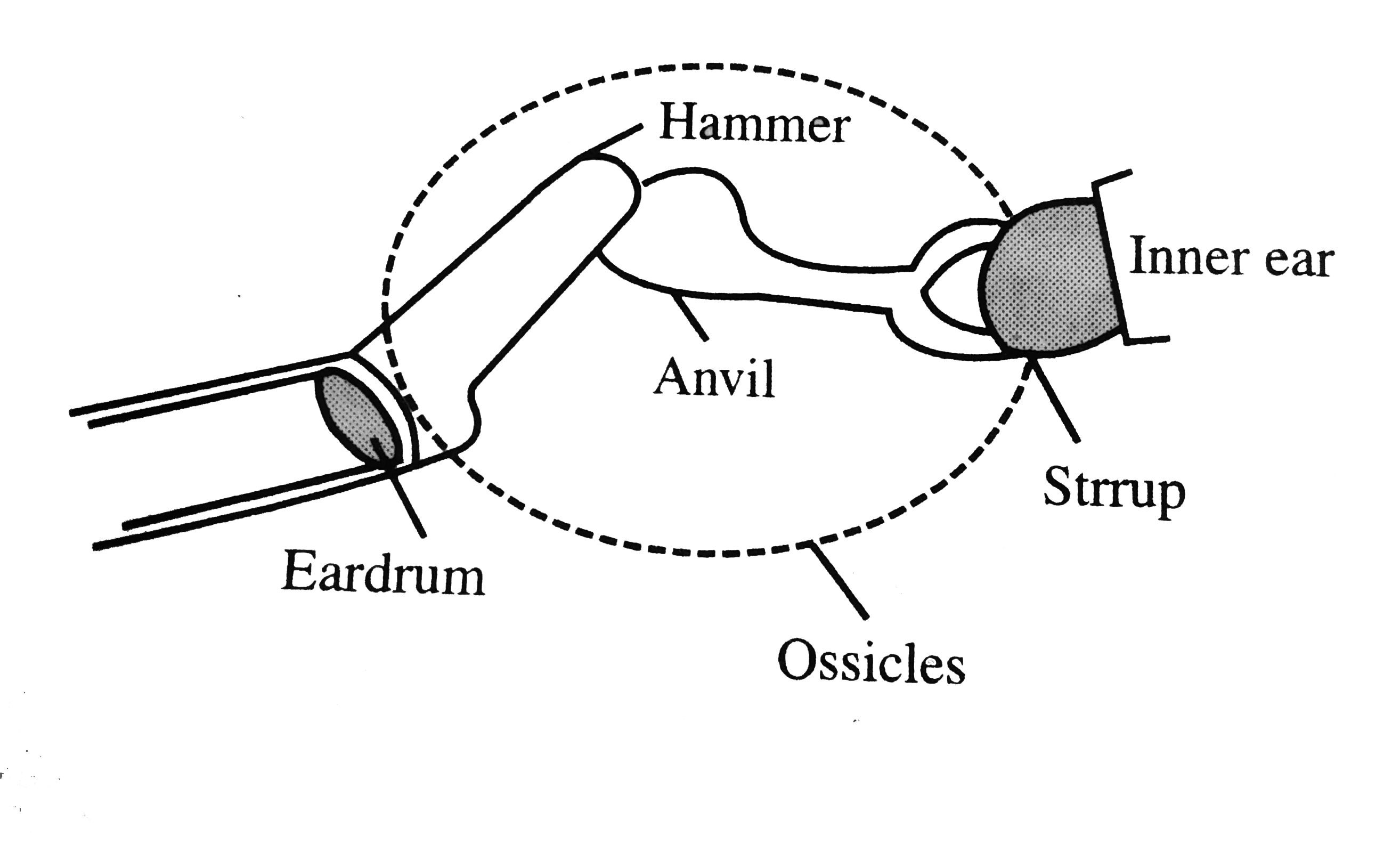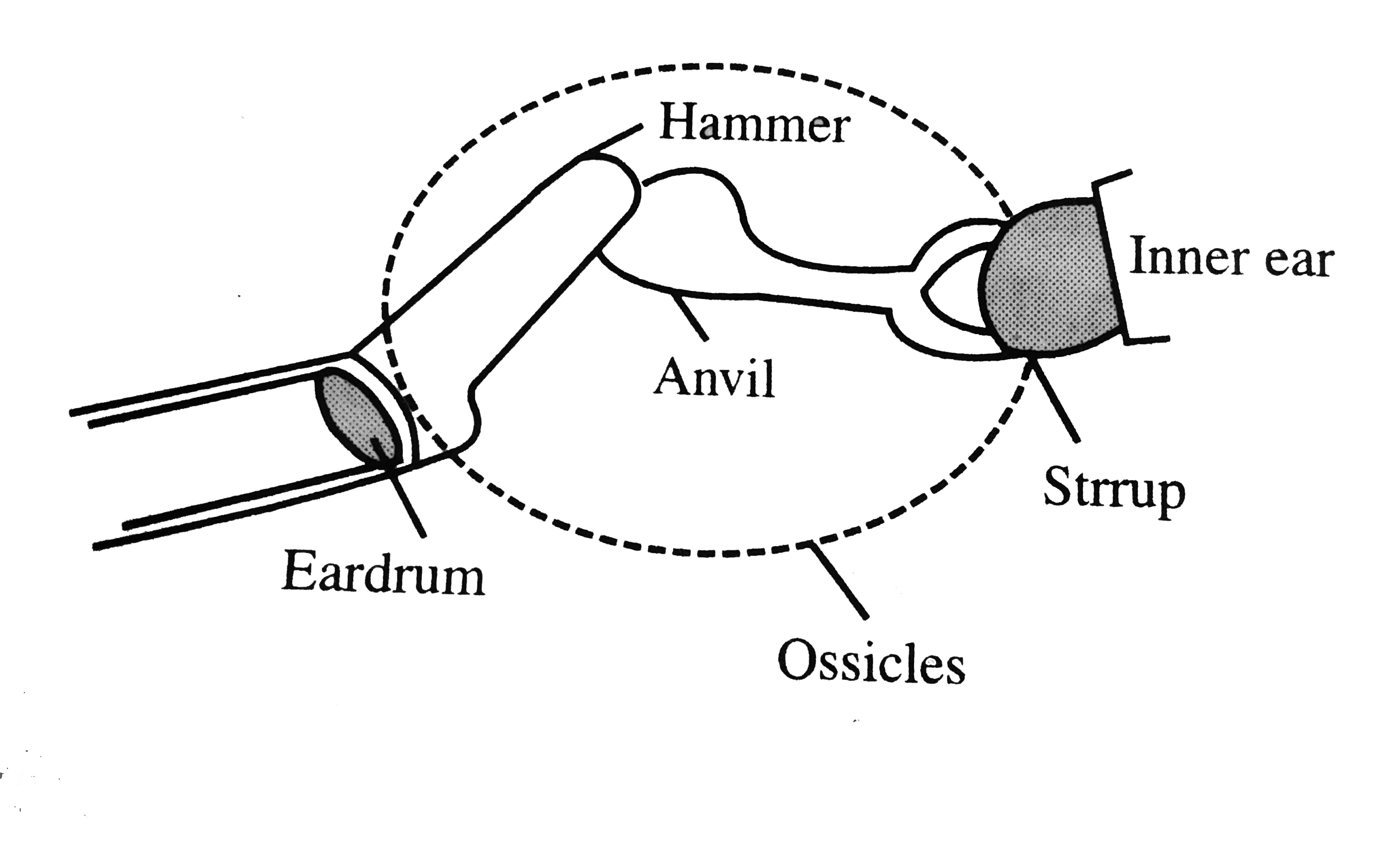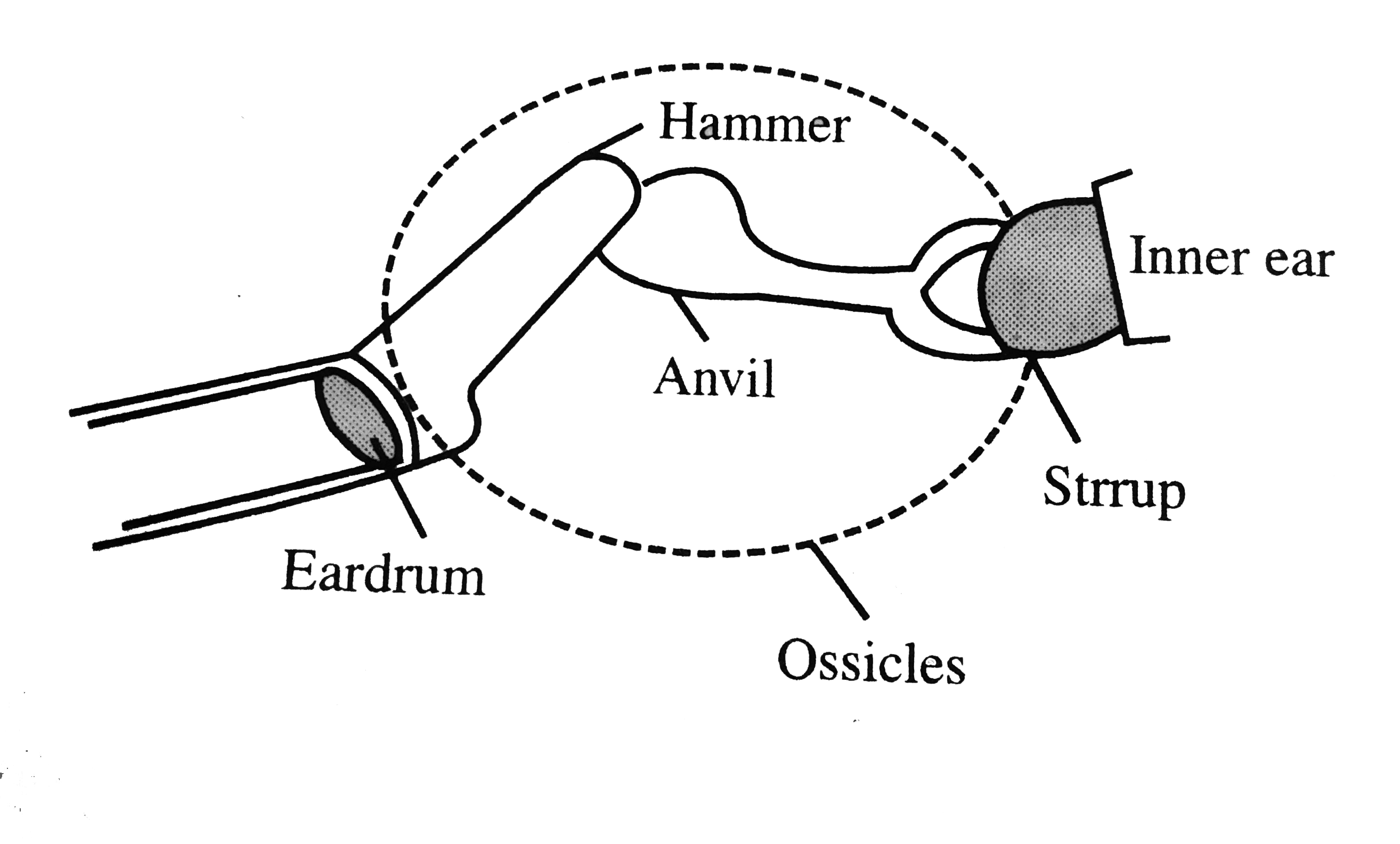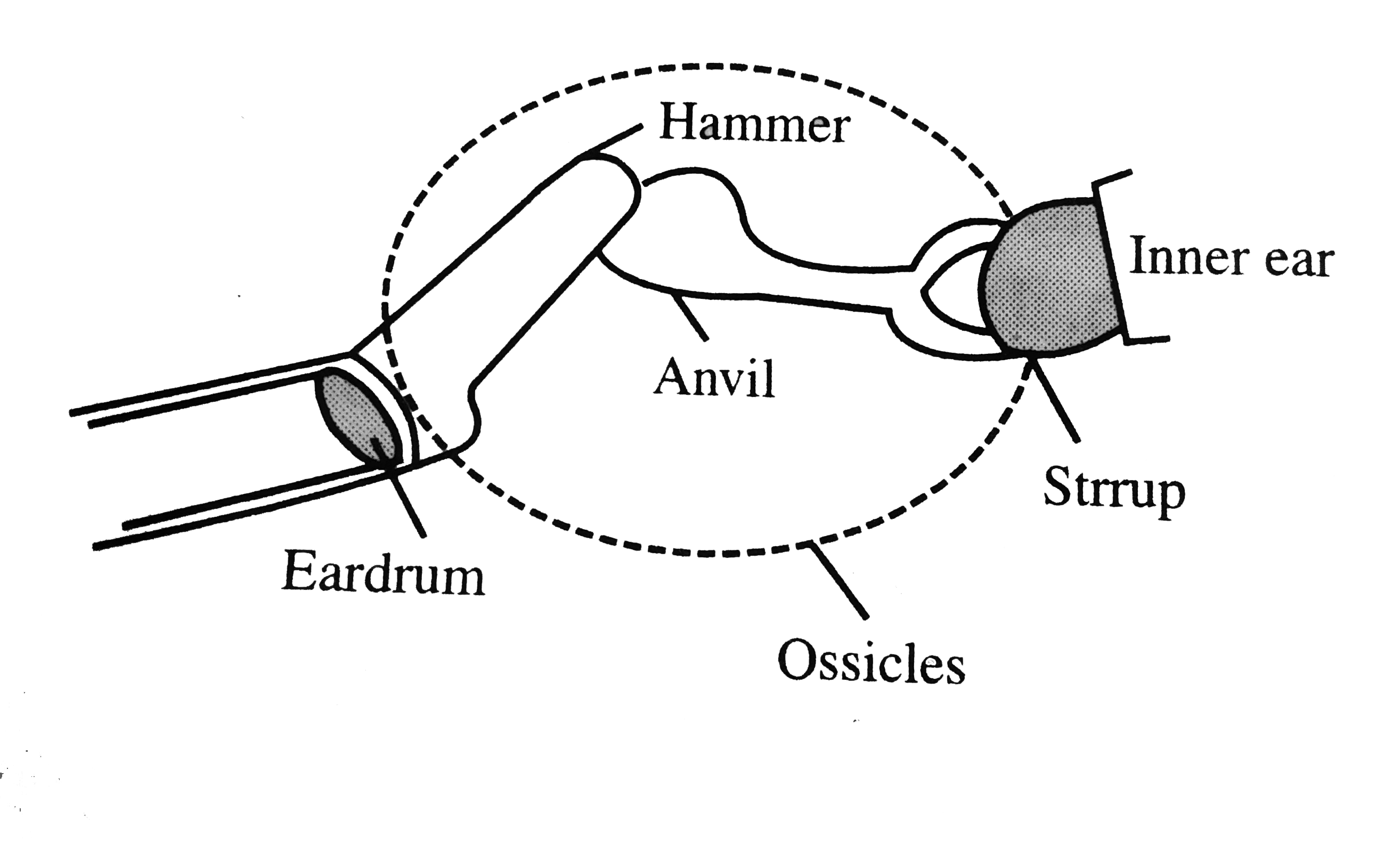A healthy person and an individual with emphysema having equal body mass were made to perform an exercise of the same amount . Their rate of oxygen entering the blood in the lungs was measured and is shown in the table below
Healthy personPerson with emphysemaO2entering blood per minute22units12units
Identify the statements that best explains the above outcome .
The healthy person has a slower breathing rate.
The healthy person has a smaller lung volume
The person with emphysema has damaged alveoli
The person with emphysema has larger surface area in alveoli
The correct Answer is:C
To solve the question, we need to analyze the information provided about the oxygen entering the blood in a healthy person versus a person with emphysema.
1. Understanding the Data:
- The table shows that a healthy person has an oxygen entry rate of 22 units per minute, while a person with emphysema has a rate of 12 units per minute. This indicates that the healthy person is able to take in significantly more oxygen than the person with emphysema.
2. Identifying Key Factors:
- Emphysema is a chronic lung condition characterized by damage to the alveoli (the tiny air sacs in the lungs). This damage leads to reduced surface area for gas exchange, which is crucial for oxygen absorption.
3. Evaluating Each Statement:
- Option 1: "The healthy person has a slower heart rate."
- This is incorrect. A healthy person typically has a higher heart rate during exercise to meet the increased oxygen demand.
- Option 2: "The healthy person has a shorter lung volume."
- This is also incorrect. A healthy person generally has a larger lung volume, which allows for greater oxygen intake.
- Option 3: "The person with emphysema has damaged alveoli."
- This is correct. Emphysema damages the alveoli, leading to decreased oxygen absorption, which explains the lower rate of oxygen entering the blood (12 units).
- Option 4: "The person with emphysema has a larger surface area in alveoli."
- This is incorrect. The damage to the alveoli in emphysema reduces the surface area available for gas exchange.
4. Conclusion:
- The best explanation for the difference in oxygen absorption rates is that the person with emphysema has damaged alveoli, resulting in a lower oxygen entry rate into the blood.
Final Answer:
The correct statement that best explains the outcome is: "The person with emphysema has damaged alveoli."
- The table shows that a healthy person has an oxygen entry rate of 22 units per minute, while a person with emphysema has a rate of 12 units per minute. This indicates that the healthy person is able to take in significantly more oxygen than the person with emphysema.
- Emphysema is a chronic lung condition characterized by damage to the alveoli (the tiny air sacs in the lungs). This damage leads to reduced surface area for gas exchange, which is crucial for oxygen absorption.
- Option 1: "The healthy person has a slower heart rate."
- This is incorrect. A healthy person typically has a higher heart rate during exercise to meet the increased oxygen demand.
- Option 2: "The healthy person has a shorter lung volume."
- This is also incorrect. A healthy person generally has a larger lung volume, which allows for greater oxygen intake.
- Option 3: "The person with emphysema has damaged alveoli."
- This is correct. Emphysema damages the alveoli, leading to decreased oxygen absorption, which explains the lower rate of oxygen entering the blood (12 units).
- Option 4: "The person with emphysema has a larger surface area in alveoli."
- This is incorrect. The damage to the alveoli in emphysema reduces the surface area available for gas exchange.
- The best explanation for the difference in oxygen absorption rates is that the person with emphysema has damaged alveoli, resulting in a lower oxygen entry rate into the blood.
The correct statement that best explains the outcome is: "The person with emphysema has damaged alveoli."
Topper's Solved these Questions
Similar Questions
Some ratioisotopes are used for medical imaging . A radioisotope is injected into th blood of a person. Malignant tissue absorb and retian this isotope much more efficiently than other healthy tissues. A sample of radio isotope having half life of 5 hour and activity of 22mCi is injected into the blood aof a patient. the isotope enters into thyroid glnads through the blood streams. The isotope radiates gamma photons each having energy of 2×10−8μJ.
(a) Qualitatively sketch the amount of radio isotope in the thyroid glands as a function of time.
(b) Sometime after the injection a scan of the glands is taken over a period of 20 minute. The total energy emitted by the glands was found to be 6×10−4J. Assume that the thyroid glands are quickly saturated (with isotopes) after the injection and almost 50% of the injected isotopes are absorbed by the glands. Make an estimate of the time after the injection when the scan was performed.
View SolutionRead the passages given below and answer the questions that follow them:
1. Swimming pools were once considered a luxury limited only to the rich. Today, thanks to plastics and plenty, they number in the millions. Few, of course, are of Olympic size where a swimmer can quickly do his laps and stay in shape. Most are above-ground, round mini-pools, line for a cool-off and a frolic. But, health experts have come to realise that exercises created specially for such swimming pools can tone the muscles, strengthen the heart and pacify the spirit of people of all ages and conditions. And these exercises aren't restricted to small pools alone. Any type of pool, including a crowded municipal one, will do.
2. Designer of the principal popular exercises is C. Carson Conrad, Executive Director of the California Bureau of Health, Physicians approve of Conrad's exercises for three reasons.
3. First, since water pressure, even on a non-moving body, stimulates the heart to pump blood throughout the body, exercise in the water promotes thorough circulation still more effectively. Second, water exercise is rhythmic. And continuous, rhythmic exercises, authorities agree, are one of the best defenses against circulatory ailments which might cause atherosclerosis, often the precursor of coronary attacks and strokes.
4. Third, water exercise can be enjoyed with benefit by both young and old, healthy and infirm swimmers, and in shallow water, non-swimmers. Dr. Ira H. Wilson and Fred W. Kasch, a physician-and-physiologist team, assert that even persons with paraplegia, rheumatic heart, asthma, emphysema, victims of polio or strokes, or amputation can exercise in water and enjoy weightless movement. Arthritis move easily under water. Some physicians use hydrocalisthenics for their cardiac patients.
5. At the University of Illinois, Prof. Richard H. Pohndori studied the effect of water exercise on a "typical” couple. He chose as subjects a man-and-wife team of physicians, 43 and 41 years old respectively, who had been sedentary for years. His program was simple: “Swim from one end of the pool to the other until you can swim 1000 yards a day. Swim every day for ten weeks.” Before they started, the couple took 151 physical tests. At the end of ten weeks, they were tested again: their pulse rate had dropped, their rate of breathing had dropped, their blood pressure had come down to normal, the cholesterol level in their blood had dropped 20 per cent. Further, more than half of the broken blood vessels disfiguring the woman's thighs had vanished, her husband had improved in all his physical-fitness tests, he reduced the size of his heart, making it more efficient. Both felt younger, more vigorous.
On the basis of your reading of the passage, answer of the question
Are swimming pools still considered a luxury limited only to the rich? Give a reasoned answer.
View Solution
Knowledge Check

When a sound wave enters the ear, it sets the eardrum into oscillation, which in turn causes oscillation of 3 tiny bones in the middle ear called ossicles. This oscillation is finally transmitted to the fluid filled in inner portion of the ear termed as inner ear, the motion of the fluid disturbs hair cells within the inner ear which transmit nerve impulses to the brain with the information that a sound is present. The theree bones present in the middle ear are named as hammer, anvil and stirrup. Out of these the stirrup is the smallest one and this only connects the middle ear to inner ear as shown in the figure below. The area of stirrup and its extent of connection with the inner ear limits the sensitivity of the human ear consider a person's ear whose moving part of the eardrum has an area of about 50mm2 and the area of stirrup is about 5mm2. The mass of ossicles is negligible. As a result, force exerted by sound wave in air on eardum and ossicles is same as the force exerted by ossicles on the inner ear. Consider a sound wave having maximum pressure fluctuation of 4×10−2Pa from its normal equilibrium pressure value which is equal to 105Pa. Frequency of sound wave in air is 332ms. Velocity of sound wave in fluid (present in inner ear) is 1500ms. Bulk modulus of air is 1.42×105Pa. Bulk modulus of fluid is 2.18×109Pa.
Q. This person (without hearing aid machine) is sitting inside a busy restaurant where average sound intensity is 3.2×10−5Wm2. How much energy in the form of sound is taken up by the person in his meal time of 1 h?A1.2×10−5JB1.8×10−4JC2.4×10−5JD3.6×10−4J
When a sound wave enters the ear, it sets the eardrum into oscillation, which in turn causes oscillation of 3 tiny bones in the middle ear called ossicles. This oscillation is finally transmitted to the fluid filled in inner portion of the ear termed as inner ear, the motion of the fluid disturbs hair cells within the inner ear which transmit nerve impulses to the brain with the information that a sound is present. The theree bones present in the middle ear are named as hammer, anvil and stirrup. Out of these the stirrup is the smallest one and this only connects the middle ear to inner ear as shown in the figure below. The area of stirrup and its extent of connection with the inner ear limits the sensitivity of the human ear consider a person's ear whose moving part of the eardrum has an area of about 50mm2 and the area of stirrup is about 5mm2. The mass of ossicles is negligible. As a result, force exerted by sound wave in air on eardum and ossicles is same as the force exerted by ossicles on the inner ear. Consider a sound wave having maximum pressure fluctuation of 4×10−2Pa from its normal equilibrium pressure value which is equal to 105Pa. Frequency of sound wave in air is 332ms. Velocity of sound wave in fluid (present in inner ear) is 1500ms. Bulk modulus of air is 1.42×105Pa. Bulk modulus of fluid is 2.18×109Pa.
Q. If the person is using an hearing aid, which increase the intensity of given sound wave change as perceived by inner ear?A1000B100C10000Dnone of these
When a sound wave enters the ear, it sets the eardrum into oscillation, which in turn causes oscillation of 3 tiny bones in the middle ear called ossicles. This oscillation is finally transmitted to the fluid filled in inner portion of the ear termed as inner ear, the motion of the fluid disturbs hair cells within the inner ear which transmit nerve impulses to the brain with the information that a sound is present. The theree bones present in the middle ear are named as hammer, anvil and stirrup. Out of these the stirrup is the smallest one and this only connects the middle ear to inner ear as shown in the figure below. The area of stirrup and its extent of connection with the inner ear limits the sensitivity of the human ear consider a person's ear whose moving part of the eardrum has an area of about 50mm2 and the area of stirrup is about 5mm2. The mass of ossicles is negligible. As a result, force exerted by sound wave in air on eardum and ossicles is same as the force exerted by ossicles on the inner ear. Consider a sound wave having maximum pressure fluctuation of 4×10−2Pa from its normal equilibrium pressure value which is equal to 105Pa. Frequency of sound wave in air is 332ms. Velocity of sound wave in fluid (present in inner ear) is 1500ms. Bulk modulus of air is 1.42×105Pa. Bulk modulus of fluid is 2.18×109Pa.
Q. With respect to information provided above, mark the correct statement.AThe person will hear more intense sound, if area of stirrup is reduced.BThe person will hear more intense sound, if area of stirrup is increase.CIf mass of ossicles is not negligible, then intensity of sound heard by the person increase.DIf amss of ossicles is not negligible, then intensity of sound heard by the person remains same.
Read the passages given below and answer the questions that follow them:
1. Swimming pools were once considered a luxury limited only to the rich. Today, thanks to plastics and plenty, they number in the millions. Few, of course, are of Olympic size where a swimmer can quickly do his laps and stay in shape. Most are above-ground, round mini-pools, line for a cool-off and a frolic. But, health experts have come to realise that exercises created specially for such swimming pools can tone the muscles, strengthen the heart and pacify the spirit of people of all ages and conditions. And these exercises aren't restricted to small pools alone. Any type of pool, including a crowded municipal one, will do.
2. Designer of the principal popular exercises is C. Carson Conrad, Executive Director of the California Bureau of Health, Physicians approve of Conrad's exercises for three reasons.
3. First, since water pressure, even on a non-moving body, stimulates the heart to pump blood throughout the body, exercise in the water promotes thorough circulation still more effectively. Second, water exercise is rhythmic. And continuous, rhythmic exercises, authorities agree, are one of the best defenses against circulatory ailments which might cause atherosclerosis, often the precursor of coronary attacks and strokes.
4. Third, water exercise can be enjoyed with benefit by both young and old, healthy and infirm swimmers, and in shallow water, non-swimmers. Dr. Ira H. Wilson and Fred W. Kasch, a physician-and-physiologist team, assert that even persons with paraplegia, rheumatic heart, asthma, emphysema, victims of polio or strokes, or amputation can exercise in water and enjoy weightless movement. Arthritis move easily under water. Some physicians use hydrocalisthenics for their cardiac patients.
5. At the University of Illinois, Prof. Richard H. Pohndori studied the effect of water exercise on a "typical” couple. He chose as subjects a man-and-wife team of physicians, 43 and 41 years old respectively, who had been sedentary for years. His program was simple: “Swim from one end of the pool to the other until you can swim 1000 yards a day. Swim every day for ten weeks.” Before they started, the couple took 151 physical tests. At the end of ten weeks, they were tested again: their pulse rate had dropped, their rate of breathing had dropped, their blood pressure had come down to normal, the cholesterol level in their blood had dropped 20 per cent. Further, more than half of the broken blood vessels disfiguring the woman's thighs had vanished, her husband had improved in all his physical-fitness tests, he reduced the size of his heart, making it more efficient. Both felt younger, more vigorous.
On the basis of your reading of the passage, answer of the question
In para 5, the antonym of 'appeared' is__
View SolutionRead the passages given below and answer the questions that follow them:
1. Swimming pools were once considered a luxury limited only to the rich. Today, thanks to plastics and plenty, they number in the millions. Few, of course, are of Olympic size where a swimmer can quickly do his laps and stay in shape. Most are above-ground, round mini-pools, line for a cool-off and a frolic. But, health experts have come to realise that exercises created specially for such swimming pools can tone the muscles, strengthen the heart and pacify the spirit of people of all ages and conditions. And these exercises aren't restricted to small pools alone. Any type of pool, including a crowded municipal one, will do.
2. Designer of the principal popular exercises is C. Carson Conrad, Executive Director of the California Bureau of Health, Physicians approve of Conrad's exercises for three reasons.
3. First, since water pressure, even on a non-moving body, stimulates the heart to pump blood throughout the body, exercise in the water promotes thorough circulation still more effectively. Second, water exercise is rhythmic. And continuous, rhythmic exercises, authorities agree, are one of the best defenses against circulatory ailments which might cause atherosclerosis, often the precursor of coronary attacks and strokes.
4. Third, water exercise can be enjoyed with benefit by both young and old, healthy and infirm swimmers, and in shallow water, non-swimmers. Dr. Ira H. Wilson and Fred W. Kasch, a physician-and-physiologist team, assert that even persons with paraplegia, rheumatic heart, asthma, emphysema, victims of polio or strokes, or amputation can exercise in water and enjoy weightless movement. Arthritis move easily under water. Some physicians use hydrocalisthenics for their cardiac patients.
5. At the University of Illinois, Prof. Richard H. Pohndori studied the effect of water exercise on a "typical” couple. He chose as subjects a man-and-wife team of physicians, 43 and 41 years old respectively, who had been sedentary for years. His program was simple: “Swim from one end of the pool to the other until you can swim 1000 yards a day. Swim every day for ten weeks.” Before they started, the couple took 151 physical tests. At the end of ten weeks, they were tested again: their pulse rate had dropped, their rate of breathing had dropped, their blood pressure had come down to normal, the cholesterol level in their blood had dropped 20 per cent. Further, more than half of the broken blood vessels disfiguring the woman's thighs had vanished, her husband had improved in all his physical-fitness tests, he reduced the size of his heart, making it more efficient. Both felt younger, more vigorous.
On the basis of your reading of the passage, answer of the question
Who is the designer of the popular swimming exercises? What is the effect of water pressure on the body?
View Solution
When a sound wave enters the ear, it sets the eardrum into oscillation, which in turn causes oscillation of 3 tiny bones in the middle ear called ossicles. This oscillation is finally transmitted to the fluid filled in inner portion of the ear termed as inner ear, the motion of the fluid disturbs hair cells within the inner ear which transmit nerve impulses to the brain with the information that a sound is present. The theree bones present in the middle ear are named as hammer, anvil and stirrup. Out of these the stirrup is the smallest one and this only connects the middle ear to inner ear as shown in the figure below. The area of stirrup and its extent of connection with the inner ear limits the sensitivity of the human ear consider a person's ear whose moving part of the eardrum has an area of about 50mm2 and the area of stirrup is about 5mm2. The mass of ossicles is negligible. As a result, force exerted by sound wave in air on eardum and ossicles is same as the force exerted by ossicles on the inner ear. Consider a sound wave having maximum pressure fluctuation of 4×10−2Pa from its normal equilibrium pressure value which is equal to 105Pa. Frequency of sound wave in air is 332ms. Velocity of sound wave in fluid (present in inner ear) is 1500ms. Bulk modulus of air is 1.42×105Pa. Bulk modulus of fluid is 2.18×109Pa.
Q. Find the pressure amplitude of given sound wave in the fluid of inner ear.
View Solution
When a sound wave enters the ear, it sets the eardrum into oscillation, which in turn causes oscillation of 3 tiny bones in the middle ear called ossicles. This oscillation is finally transmitted to the fluid filled in inner portion of the ear termed as inner ear, the motion of the fluid disturbs hair cells within the inner ear which transmit nerve impulses to the brain with the information that a sound is present. The three bones present in the middle ear are named as hammer, anvil and stirrup. Out of these the stirrup is the smallest one and this only connects the middle ear to inner ear as shown in the figure below. The area of stirrup and its extent of connection with the inner ear limits the sensitivity of the human ear consider a person's ear whose moving part of the eardrum has an area of about 50mm2 and the area of stirrup is about 5mm2. The mass of ossicles is negligible. As a result, force exerted by sound wave in air on eardrum and ossicles is same as the force exerted by ossicles on the inner ear. Consider a sound wave having maximum pressure fluctuation of 4×10−2Pa from its normal equilibrium pressure value which is equal to 105Pa. Frequency of sound wave in air is 332ms. Velocity of sound wave in fluid (present in inner ear) is 1500ms. Bulk modulus of air is 1.42×105Pa. Bulk modulus of fluid is 2.18×109Pa.
Q. Find the displacement amplitude of given sound wave in the fluid of inner ear.
View SolutionThe functional declines of advancing age are depressing. The heart's ablity to pump blood drops about one per cent: blood flow to arms and legs decreases by thirty to forty per cent in old age. The amount of air a person can exhale after a deep breath lessens and the chest wall stiffens with age. However, recent studies have shown that most of these age-associated eclines can be delayed by exercise. Exercise lowers the resting heart-rate and increases the amount of blood pumped with each beat in older people. When stress is placed on bones through exercise, calcium content rises, with the result that resistance to fracture is improved.
'Which one of the following statements is correct?
View Solution
